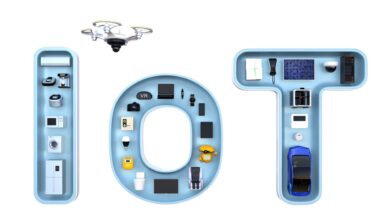What Is An Intelligent Electronic Device: Understanding The Basic Concept!

An increasingly networked environment requires reliable and efficient electrical infrastructure. The Intelligent Electronic Device is sometimes referred to as an IED. It is a sizable part that is necessary for contemporary electrical systems, automated factories, and smart homes. These devices are the underrated heroes that monitor and protect various elements of our electrical network. We will explore various factors about What is an Intelligent Electronic Device in this blog.
What Is an Intelligent Electronic Device?
An Intelligent Electronic Device (IED) is fundamentally a customized computer or microprocessor-based device made to carry out certain functions relating to monitoring, controlling, safeguarding, or communicating inside an electrical system. IEDs have a wide range of uses; they are not just used in a particular industry; they are also used in common smart appliances, industrial automation, building management systems, and electricity generation and distribution.
Key Features of Intelligent Electronic Device
Here are some key features of intelligent electronic device:
1. Sensors
IEDs use a variety of sensors to track variables including voltage, current, temperature, pressure, and more. These sensors offer crucial information for making decisions and managing systems.
2. Processing Power
IEDs have strong microprocessors that can manage complicated algorithms and computations. This makes it possible for them to quickly examine data and react to changing circumstances.
3. Communication
IEC 61850, Modbus, or DNP3 are just a few examples of the industry-standard protocols that are frequently used by IEDs to connect to other hardware and systems. They can communicate with other devices to coordinate operations and share data. This guide on how to control IOT devices helps you to get an clear idea about it.
4. Reliability
IEDs are designed for high reliability and durability due to their crucial role in system functioning. In case of hardware failure, many IEDs include duplicate parts to guarantee ongoing functioning.
Read More: What Is Smart Device Integration
Applications of IEDs
Intelligent electronic devices (IEDs) are used in a wide range of applications, including:
Power Grids:
Power substations, transmission lines, and distribution networks are all protected, controlled, and monitored with the help of IEDs in the electrical power sector. They are essential for fault detection, isolation, and system restoration (FDIR) which guarantees a constant supply of electricity.
Industrial Automation:
In industrial settings, IEDs used to regulate equipment, keep an eye on procedures, and guarantee security. They help to make production processes more effective, cut down on downtime, and improve worker safety.
Smart Buildings:
IEDs regulate lighting, security, and HVAC (Heating, Ventilation, and Air Conditioning) systems in smart building management systems. They optimize energy use and provide surroundings that are comfortable and safe.
Renewable Energy:
The management of renewable energy sources like wind and solar power depends on IEDs. They make grid integration, stability maintenance, and effective power generation possible.
Benefits of IED
Intelligent electronic devices (IEDs) provide various benefits which deal with enhancing efficiency, reliability, energy conservation, data insights and safety.
Enhanced Efficiency:
IEDs improve adaptability, which increases operational effectiveness. Intelligent electronic devices guarantee that manufacturing equipment operates optimally, reducing loss and unavailability.
Improved Reliability:
This is crucial for identifying problems and security which improves the electrical system’s efficiency. IED reduces interruptions in service and helps in preventing grid failures.
Safety:
Intelligent electronic devices monitor equipment conditions and stop operations if they detect any harmful ones, helping to maintain workplace safety. This promotes the safety of both employees and assets.
Energy Conservation:
It is essential for managing energy. Smart buildings use less energy by changing lighting and cooling and heating systems depending on occupancy and environmental factors.
Data Insights:
Large volumes of data are produced by intelligent electronic devices which can be examined and utilized to assist with options. Organizations can estimate maintenance needs and make informed decisions using this analytical technique.
How Does IED Work?
Data Collection: IEDs constantly gather information from their sensors. Depending on the application, this information may consist of voltage and current readings, temperature readings, or any other relevant variable.
Data processing: The IEDs CPU processes the collected data. The data is exposed to complex logic and algorithms to decide if any actions are necessary. The IED may evaluate the data, for instance, in a power grid to find a malfunction or unusual state.
Decision Making: The explosive device takes independent judgments based on the data that has been analyzed. In a smart building, the IED may choose to modify the thermostat settings to maximize energy efficiency and preserve comfort.
Execution of activities: The IED can carry out activities after making a choice. This might entail giving instructions to other hardware or software to make modifications. The IED might isolate a problem in a power grid by tripping a circuit breaker.
Conclusion
The unseen champions that keep modern society running are intelligent electronic devices . IEDs are the backbone behind intelligent and automated systems. It preserves anything from electricity supply stability to assuring the effectiveness of industrial operations and the comfort of smart buildings.
Their capacity for data collection, processing and real time action is revolutionizing industries and enhancing our quality of life. We hope that this article What is an intelligent electronic device clear your all queries. Also read our guide on how to get most of your android devices.





